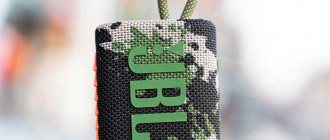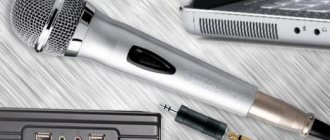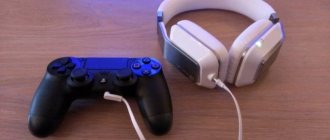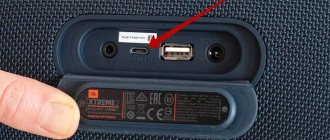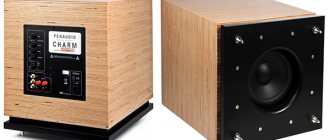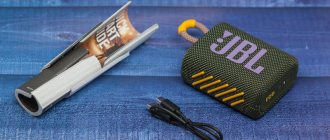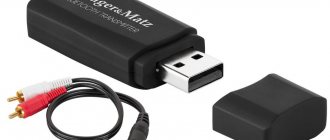Given the basic functionality of Bluetooth, it would seem impossible to connect more than one speaker.
However, there are several ways to connect to multiple speakers via Bluetooth. The new hardware comes with Bluetooth 5. Other solutions include apps like Bose Connect and Ultimate Ears.
Samsung Galaxy S8 and later phones and iPhones running iOS 11.4 or later can broadcast to two speakers at once.
The JBL Connect+ feature in their Bluetooth speakers also allows the speakers to pair with each other.
Figuring out which setting is right for you doesn't have to be difficult. All you need to do is take an inventory of your equipment and choose the appropriate connection method based on the devices you have.
Theory. Connection types
In electrical engineering there are two types of connections - series and parallel. With a series connection, the resistance is summed up; with a parallel connection, it becomes lower than the smallest of the connected ones. This is something worth remembering and will come in handy in order to connect your speakers correctly.
Basic formulas for parallel and serial connections
There is also a mixed connection. This is when serial chains and parallel connections are “mixed”. In this case, calculation formulas are used, gradually arriving at one of the “pure” circuits - parallel or sequential.
Mixed compound and its conversion to "simple"
The figure shows the sequential transformation of a complex mixed connection into a simple one.
Sync Sony Speakers with Party Chain
Modern models from Sony are equipped with the Party Chain function. It is this function that allows you to simultaneously connect two or even more speakers. But each of them must have the above-mentioned function.
Instructions:
- Connect one of the speakers to your phone. She will act as the "Party Host".
- On this column, press and hold the “Add” button for a few seconds. A beep will sound and some buttons will begin to flicker.
- Click the "Add" button on the next column and hold for a few seconds.
The proprietary function synchronizes not only sound playback, but also lighting.
Connect using the Bose Connect and Ultimate Ears apps
If you have audio equipment from Bose or Ultimate Ears (UE), you can connect it to your smartphone using special proprietary applications.
You will need:
- Two Bose or UE speakers;
- Branded application Bose Connect, UE Boom or UE MegaBoom.
- The life hack may not work if you:
- Audio equipment from any other manufacturer;
- An application that is not suitable for your audio equipment model is installed;
- A very old phone.
Instructions:
- Install the required application;
- Choose PartyUp Mode in the Ultimate Ears app or Plus Mode in the Bose Connect app;
- Connect the second device following the on-screen prompts.
- As stated above, this mechanism only works with products from only a few manufacturers. Which, moreover, are practically not represented on the domestic market. However, if you suddenly have audio equipment from these particular companies, why not take advantage of this useful feature?
JBL Connect+
Many JBL Bluetooth speakers come with a Connect, Connect+ or PartyBoost feature that allows them to be paired together. To take advantage of this, connect your device to one of the speakers. Then turn on the second speaker and press the Connect, Connect+ or PartyBoost button.
Like Ultimate Ears, JBL allows you to connect up to 100 JBL devices together, which greatly improves Bluetooth 5. Using the JBL Connect app, you can also configure two speakers to work in stereo.
Sequence of steps when connecting JBL headphones to a mobile phone
To pair wireless headphones and a smartphone, you must do the following:
- Charge both your mobile device and JBL headphones. Discharging devices at the time of their first pairing is, at a minimum, not desirable;
- Make sure your phone and headphones are in close proximity to each other. Too much distance between devices may cause problems with their connection; Place your headphones next to your phone
- Turn on your phone and JBL headphones; Turn on your JBL headphones
- Open the notification shade on your phone. Find the “Bluetooth” option in the list and turn it on; Turn on bluetooth on your device
- Bluetooth settings and a list of connected devices will open on the phone;
- Depending on the version of your OS, click on “Add device”, “Search for device”, or “Update”; Click on “Search” to carry out the device search procedure
- After a few seconds, your JBL headset will be detected. If it was not detected, then while searching for devices on your phone, activate the pairing mode on the headphones. To do this, hold down the pairing button for a few seconds. If you do not know whether your wireless devices have such a button, then refer to their manual. In many cases, the functionality of the pairing button is taken over by the headset power button, which also needs to be pressed for a few seconds. After which the indicator on the JBL will blink; The JBL headphone indicator will flash blue
- When your phone detects the headphones and they appear in the list of found devices; JBL headphones will appear in the list of devices
- Tap on their name to perform the pairing procedure; Tap on their name to pair
If you don't see your JBL wireless headset listed, it's because manufacturers sometimes use shortened nicknames for their products. Or in some cases very vague names. But usually, you will see the actual product name in the list of available devices to be connected. You may also notice other devices to connect to. But until you click on the names of these devices, you will not be connected to them.
Further procedure:
- The devices will be paired. Typically, the pairing will be indicated by a beep in the headphones and the pairing indicator will stop flashing. JBL will be displayed with the status connected (Connected); JBL headphones will be connected
- All that remains is to check if there is sound. Turn on any musical composition and enjoy high-quality and rich sound from JBL. Depending on your pair's controls, you'll be able to toggle playback, track navigation, increase and decrease volume, and manage phone calls. You can also call an assistant using the functionality of your headphones and work with him;
- The next time you turn on the wireless headset, it will pair automatically.
How to connect to the phone?
This is even easier to do. The connection process is similar to the example with a computer. Audio speakers are often purchased for use with phones or tablets, as they are easy to carry due to their mobility and small size.
At the same time, the sound quality of such equipment is noticeably superior to the standard speakers of ordinary smartphones and most models of portable speakers. Another advantage is that it is easy to connect, since no special cables or downloading of a suitable application are required.
To pair, you will again need to use the Bluetooth module, which is present on almost every phone, even not the most modern and new one.
First you need to place both devices next to each other.
Then activate Bluetooth on each one - this button is easily recognizable by its specific icon. To understand whether the function is enabled, you must press the button until the indication signal appears. This usually means a flashing red or green color. If everything worked out, you will need to search for devices on your phone. When the column name appears, click on it.
READ How to connect a voltage stabilizer to a TV
Wired connection
To connect two speakers to one phone, you can use a wired connection. To do this you will need:
Let's look at how to make a wired connection.
First, you need to connect the adapter-splitter to the jack on your phone, and the AUX cables to the connectors located on the speakers. Then connect the other ends of the AUX cable to the splitter adapter. Now you can turn on the track. You should know that the speakers will reproduce stereo sound, that is, one is the left channel, the second is the right. You should not space them far apart from each other.
This method is universal and works with almost all phones and acoustic models. There is no sound lag or other problems with it.
The disadvantages are the need to purchase an adapter, a noticeable separation between channels, which makes listening to music in different rooms impossible . The wired communication connection does not allow the speakers to be spaced far apart.
The connection cannot be made if the phone has a USB Type-C connector and a Type-C to 3.5 mm adapter instead of an AUX connector.
Is it worth buying Yandex.Module
You definitely need to take Yandex.Module if you use a regular TV or an outdated Smart TV that is no longer updated. But I recommend that owners of modern “boxes” think about it. All you get from the Module-Station tandem is voice control of video and movie playback.
Yandex.Module is controlled by voice. It is very comfortable
For some, this will be too much. But think for yourself: after all, you had access to streaming before. This means that using the Module in conjunction with a modern TV will be redundant. Therefore, take your time and think carefully. As an owner of a new generation Samsung Smart TV with support for AirPlay and Apple applications, I wouldn’t buy such a thing.
The exception is purchasing both devices as a set at the start of sales. Yandex decided at the pre-order stage, from October 5 to October 14, to give us the opportunity to order the speaker and Module as a set at a special price. A set with a speaker equipped with an LED screen costs 8,990 rubles, and a set with a speaker without a screen costs 7,990 rubles. The discount will be 2990 rubles. That is, buying a set is justified and you can really save a lot on it.
How to connect two bluetooth speakers together
If there are two Bluetooth speakers from the same manufacturer or even the same model, the synchronization feature between them is probably available. They can be connected in a few steps.
This method is available for pairing two speakers of the same brand, but has no audio source device requirements, so it is suitable for Android and IOS smartphones.
For example, consider a combination of JBL brand speakers. Instructions for devices from other manufacturers may be slightly different, but they work the same:
- Press the button to turn on the first speaker.
- Activate the Bluetooth wireless connection on your phone.
- The model name will appear in the list of devices available for connection. If the connection is being established for the first time, you need to run a search.
- A special sound signals the connection.
- Press the button to turn on the second sound system.
- Press the pairing button on both devices. In this case it's called "JBL Connect".
Wired connection method
This method allows you to combine speakers into headphones by dividing them into channels. To do this, you will need AUX cables (usually included) and a double mini-jack (purchased separately).
Instructions:
- Connect AUX cables to playback devices.
- Insert the AUX cables into the dual mini jack.
- Connect the twin's connection cable to the 3.5mm jack on your phone.
A wired connection is very easy to implement, but the method has its own nuances. This is good because it does not require a Bluetooth connection, so it is suitable for playing on older players. On the other hand, it is not suitable for smartphones that do not have a 3.5 mm jack, and lately there are more and more of them.
Bluetooth 5
Bluetooth 5 extends the Bluetooth range to 120 feet and allows you to connect up to two devices simultaneously. Not many device manufacturers have adopted the new standard for their devices, but they are expected to do so in the next few years.
With some of these technologies, like Samsung's dual audio feature, it's as easy as flipping a switch. For others, you need to set up a connection through the app. If you want to learn more about Bluetooth 5, check out this article on the Lifewire website.
Bose Connect
The Bose Connect app lets you connect two SoundLink Micro Bluetooth speakers (on Amazon) to one phone in party mode (the speakers play the same thing) or stereo mode (each speaker provides a left or right channel).
Turn on both speakers, connect to one via Bluetooth, activate the Connect app, and activate party mode. Once the speakers are connected, you enter party mode. You can switch between stereo mode and party mode by selecting stereo (L/R).
You can activate Party Mode without the app by pressing the Bluetooth and Volume Up buttons at the same time and following the audio instructions. To switch between stereo mode and party mode, press and hold the Bluetooth and Volume Up buttons until the speakers say "stereo" or "party mode." Press and hold the Bluetooth button until you hear confirmation that the speakers are muted.
The app can also be used with Bose Bluetooth headphones, allowing you to sync not only two pairs of headphones for paired listening, but also a pair of headphones and a pair of speakers. This can be useful for listening to music through a speaker inside the house and for playing the same music through headphones outside.
Using the AmpMe Universal App
The application for connecting two speakers via Bluetooth allows you to play sound from the file system, Spotify, SoundCloud and YouTube services. A special feature of the program is that it works in multi-user mode, because one phone is connected to the speaker, while others require more participants.
AmpMe Party Creator acts as a DJ, directing the music. Other users can participate in chat discussions or queue tracks by activating the Guest DJ feature.”
You can log into the app using your Google or Facebook account. You can search for "parties" nearby when your smartphone's location feature is turned on.
The procedure for creating a “party”:
- Open the application, go into it.
- In the bottom right corner, click the plus sign drop-down menu.
- Select the playback source (File Manager, YouTube, Spotify, SoundCloud).
- Create a playlist or select a previously created one.
Stereo pair HomePod
HomePod is last on this list simply because it requires so many compatible devices. With an iPhone, iPad, or iPod Touch running iOS 11.4 or later, you can connect two HomePod speakers for stereo sound. One limitation is that the speakers must be in the same room.
In the Apple Home app, press and hold HomePod, then tap Settings. Select Create a stereo pair and select the second HomePod speaker to be used for the stereo pair. If necessary, you can use the two arrow button to switch left and right channels. From here, click back and you're done.
Daisy chaining of speakers
A daisy chain connection is when they are switched on one after the other, like carriages. If you look at the diagram, the wires are connected like this. We feed the minus from the output of the amplifier to the minus of speakers A, and the plus to the plus of loudspeaker B. And we connect their free inputs (plus at A and minus at B) to each other.
Connecting speakers in series: resistance adds up, output power drops
Please note that the impedance of the speaker chain increases. It is summed up from all components
In the example, two 2 Ohm speakers are connected in series. The total resistance is already 4 Ohms. This connection is good if the amplifier cannot operate with a low-impedance load. Low resistance is 2 ohms and below. In this case, either speakers with a higher resistance are connected, or low-impedance ones are connected in series.
How to connect three or more speakers in series
How to connect three speakers in series to one channel? Yes, everything is the same - one by one. Minus, apply to minus first (A); plus - to the plus of the third C (or last). We connect the free plus from element A to the minus of element B. Then we feed plus B to minus C. So we get a chain of three speakers connected to one channel.
How to connect 3 speakers to 1 channel in series
If you need to connect four or more fragments in series to one channel, simply insert them in the middle. Don't forget that circuit resistance adds up. With each new element in the chain it becomes larger.
Power in series connection
As the resistance increases, the output power will drop. How many watts will each speaker receive when connected in series? And you can count. There is a formula - it is in the picture.
Input power is the power that the amplifier will put into the channel, that is, what we are trying to calculate. The measured power is that indicated in the characteristics (what goes into the channel according to the passport data). And Zr is the resistance at which the power was measured. It is usually written in the characteristics as the minimum load on the channel. And the total resistance is the resistance of the speakers that you plan to “hang” on this channel.
Formula for calculating the actual power supplied to the amplifier channel
Let's apply the formula with an example. Let us have a 2-channel amplifier that outputs 100 W (2*100 W) to each channel. It cannot work with low-resistance loads (2 Ohms and below). Therefore, it was decided to connect two speakers with a resistance of 2 Ohms in series for each channel. We substitute the data into the formula: 100 W * (4 Ohm / 8 Ohm) = 100 W * 0.5 = 50 W. This is what will go into each channel.
Since there will be two loudspeakers on the channel with the same parameters, the channel power will be divided in half. So we get that each speaker will receive 25 watts. If you add the desired power reserve, you will have to look for speakers with a power of at least 30-35 W.
Instructions for connecting several Bluetooth gadgets
To connect two or more Bluetooth devices to your phone at the same time, follow these simple instructions:
- Go to Settings.
- Go to Bluetooth and turn it on.
- On your client gadget, press and hold the power button. This will put it into discovery mode.
- On your smartphone, tap Search for Devices.
- Select the required gadget from the list.
If necessary, enter a password or PIN. Sometimes a standard one is required: “0000”, “1234” or “1111”.
- Now repeat the steps for the new device: enter it into discovery mode, click “Search for devices” on your phone and select it from the list.
- Repeat for the third gadget and so on.
Remember the features that I described above: a client device (headset, mouse, etc.) cannot be connected to two smartphones at the same time, only one headset can be connected, and in case of “overload” (more than 4 devices, active using the network), failures may occur.
The instructions above are suitable for Android gadgets, iPhones, laptops, PCs, TVs and other equipment. The main principle: connect as many devices as needed - according to the usual scheme. But no more than seven.
For iPhone, starting from iOS 13, a new feature has appeared: simultaneous connection of two AirPods or PowerBeats Pro gadgets to one iPhone. You can make the connection exactly as described in the instructions above. The sound reproduced in the headphones is absolutely identical, there are no lags.
Samsung phones also implement a similar function, but here the sound on the second pair is a little late. Called Dual Audio technology, it is available on the Galaxy S9, S8, S9+, S8+ and Note 8, 9.
Proprietary Dual Audio function on Samsung phones
Owners of some Korean brand phones will be able to connect two speakers at once via Bluetooth without downloading third-party software or purchasing adapters. This requires the Dual Audio function; it is available with Bluetooth 5.0 on S series smartphones, starting from S8, and on Note series smartphones, starting from Note 8.
Instructions:
- Pair your devices via Bluetooth, but don't play audio.
- Select the Settings menu on your phone.
- In it, click on the line “Bluetooth” (on some versions of Android it is called “Connection”).
- On the top right, click on the button with the image of three dots.
- Click on the “Dual Audio” line and activate the function.
The disadvantage of this method is that there may be a slight delay in playback. It is almost invisible, but if the speakers are nearby, you can hear it.
Strange compatibility
In January 2022, JBL showed two speakers supporting the new JBL Connect+ function, which replaced the regular JBL Connect. The main difference of the “plus” is that it combines 100 speakers into one huge music network, while the regular version can only connect a couple. At the time of this announcement, 10 million speakers from the JBL Flip line had already been sold. Much to the chagrin of their owners, new devices with the JBL Connect+ function do not connect to old ones. Who would have thought, but in 2022 JBL showed a new technology for combining speakers - PartyBoost, which ignores the existence of two versions of JBL Connect.
So, JBL has three ways to link speakers into groups via Bluetooth, but these methods are not compatible with each other. Such fencing confuses users and prevents them from fully using one of the device’s functions. There's probably a complex technical reason behind this, tied to Bluetooth transmitters, or maybe it's just merciless marketing. In the picture below you can see how strange JBL's compatibility looks. Each column lists models that work only with a specific function.
Problems and their solutions
The reasons why the speakers may not synchronize with each other and not connect to the smartphone are as follows:
- column support functions;
- models with the same function, but the phone does not have Jbl Connect installed;
- the speakers have incompatible firmware;
- a software error occurred in one of the speakers;
- the same software glitch on the device itself;
- one of the gadgets did not have a previous pairing with another transmitting device erased from memory;
- one of the devices conflicts with the MAC address;
- Low battery level on any device.
Solution:
- Before the first combination, check the operation of the devices and fully charge the batteries;
- hold down the bluetooth activation button for 5 seconds, waiting for the module to connect (the backlight should blink);
- The initial connection is best done by placing the devices nearby;
- if one of the gadgets was previously synchronized with another device, reset the settings;
- if the firmware on the speakers does not match, download a special application from the market of the installed operating system;
- if the first speaker is connected to the device, but there is no sound, you can select the “Forget this device” column in its menu, and then try to connect the gadget again;
- if the program does not work, the smartphone itself reboots;
- and even when reconnecting, you need to check whether the phone is connected via bluetooth to another gadget;
- If speakers with different functions are connected to the device using wires, carefully check the integrity of the cables and connectors.
Connecting 3 JBL devices with different functions
Let's see how to connect JBL Connect audio equipment to Connect+:
- Connect your phone via an adapter to the splitter.
- Then take 2 stereo cables with 3.5 jack-to-jack plugs. Connect them to a splitter.
- It is not necessary to use Bluetooth when establishing a cable connection. Open the holes hidden behind the protective tabs and insert the plug into the provided socket.
- Play music on your smartphone to evaluate its quality.
If all the steps are completed correctly, the speakers will play the same tune in sync. In this case, the sound will be slightly different, providing a deep stereo effect.
Manual driver update
The operating system, with the help of the Wizard, does not always find a new or more suitable driver. This procedure can be done manually. Algorithm of actions:
- Press the “Start” button or the Win+X key combination.
- In the menu that appears, select “Device Manager”.
- Open the section with devices responsible for sound.
- Right-click and select “Update configuration” in the context menu.
- For the required device, select “Update driver” through the context menu.
- In the dialog box that opens, select “Automatic”.
After reinstalling the driver, you may need to restart the computer, which the operating system will warn you about. Also, in some cases, to install an old or special version of sound drivers, you may need to run an EXE file.
Wire connection
Speakers with different functions cannot be connected to each other via Bluetooth.
However, there is a way out - a wired connection. For this you will need:
- two AUX connecting cables on both sides, which must have mini-jacks.”
- splitter with a “male” mini-jack and two 3.5 mm jacks;
- device with 3.5 mm mini-jack jack;
The connection is made as follows:
- Each cable is connected with free plugs to the AUX sockets of the hearing aids.
- a splitter adapter is connected to the device;
- AUX cables are inserted into the splitter;
After you start playing the track, the two portable speaker systems will operate in stereo mode.
If your smartphone has a connector other than a mini-jack, you will need to look for a suitable adapter-splitter.
Self-assembly of a Bluetooth speaker
You can assemble a Bluetooth speaker in different ways: simply, difficult, or with enthusiasm. If you don’t want to make your life particularly difficult, then just follow the instructions:
- The battery and amplifier are placed inside the case. In order to give the elements rigidity, simply place them on glue. Other fastening methods can be used. The main task is to prevent movement inside the case.
- We install speakers in special holes. To eliminate the buzzer while music is playing, seal the joint with sealant.
- The receiver is placed on the outside, so there must be a hole in the housing. All the necessary wires will be threaded through them.
- All that remains is to attach the receiver and provide access to the charging socket.
After all the manipulations, the column will work, but the appearance will scream that the equipment was made by hand. For beauty lovers, you can use a more accurate option:
- Switch and charging connector - unsolder.
- Take them outside the housing (select a wire of the required length).
- Provide holes in the frame for all elements.
- Installation is carried out using epoxy resin.
Now all components will be hidden in the case, and the appearance of the equipment will significantly improve. If you do everything efficiently and approach the issue ideologically, you can get an excellent designer speaker that will be in no way inferior to mass-produced samples.
Thus, a DIY Bluetooth speaker will cost 7-8 dollars. This is an order of magnitude cheaper than buying even the cheapest equipment. Naturally, you will have to purchase all the necessary elements for personal assembly and make preparations.
All you have to do is make a choice: follow the instructions or spend money on a ready-made standard solution?
Theory. Connection types
In electrical engineering there are two types of connections - series and parallel. With a series connection, the resistance is summed up; with a parallel connection, it becomes lower than the smallest of the connected ones. This is something worth remembering and will come in handy in order to connect your speakers correctly.
Basic formulas for parallel and serial connections
There is also a mixed connection. This is when serial chains and parallel connections are “mixed”. In this case, calculation formulas are used, gradually arriving at one of the “pure” circuits - parallel or sequential.
Mixed compound and its conversion to "simple"
The figure shows the sequential transformation of a complex mixed connection into a simple one.
Connection types
Let's look at connecting via Bluetooth using the JBL wireless audio speaker as an example.
How to connect a Bluetooth speaker to a laptop, phone and other devices: step-by-step instructions
Wired connection
Connect the audio speaker to the phone wiredly, perhaps as follows:
- via an AUX cable, then the audio speaker must have its own power source;
- via USB and AUX if the audio speaker does not have its own power source.
It is increasingly rare to find models that are equipped with an AUX input. However, this connection provides quality sound, although it is not completely portable. You can connect multiple speakers if you use an AUX cable.
Wireless connection
To connect the audio speaker wirelessly, you can use Wi-Fi or Bluetooth. Moreover, not all audio systems support the first technology. Expensive and very expensive models have such support.
A popular way to connect portable audio speakers to a smartphone is using Bluetooth wireless data technology.
Let's look at how to use a Bluetooth speaker using JBL as an example.
The process of connecting two devices using Bluetooth technology is called “Bluetooth pairing”. To connect two accessories together, important conditions must be met:
- both devices must have active Bluetooth;
- the device we want to connect to must be visible;
- The accessories have pairing mode enabled (this will make it visible).
Why connect several columns?
If you turn on two JBLs at the same time, you can get a stronger effect, improve the quality, increase the volume and achieve a surround effect. If the equipment is positioned correctly, it can easily be confused with professional devices. The feeling of music at a party or holiday will be completely different.
Knowing how to connect JBL speakers together, you can get professional sound without purchasing expensive additional equipment. To solve the problem, you can use either the more convenient Bluetooth or the usual wired connection.
In the comments, tell us if you were able to connect the two devices and what difficulties you encountered.
Wired connection method
This method allows you to pair speakers like headphones, divided into channels. To implement this, you will need AUX cords (they are usually included in the kit) and a Mini Jack double (purchased additionally).
Instructions:
- Connect AUX cables to playback devices.
- Insert the AUX cords into the twin Mini Jack.
- Plug the twin connection cable into the 3.5 mm jack of the phone.
A wired connection is very easy to make, but the method has its own nuances. It's good because it doesn't require a Bluetooth connection, so it's suitable for playing from old players. On the other hand, it is not suitable for smartphones that do not have a 3.5 mm jack, and there are more and more of them lately.
Implementation
Our test used Bluetooth speakers for Android and iOS phones Beatbox_Beats_by_dr._Dre_Mini_S11. And you can achieve this goal using the following additional adapters:
- A standard set of AUX cables that come with the speakers.
- A small mini Jack adapter (double).
Here's what we do:
- You need to connect AUX cords to the speakers.
- Insert the other ends of the cables into the corresponding sockets of the audio twin.
- Insert the other side of the adapter into the headphone jack on your smartphone.
Using this combination, our Beatboxes turned into a stereo system in which the first speaker reproduces only the right channel, and the second only the left.
This method is not convenient for all situations, since wires must be involved, but you can connect such a stereo pair to absolutely any MP3 player that does not have a Bluetooth module.
By the way, you don’t necessarily have to have the exact speaker model we’re describing, because almost all wireless speakers have an AUX input so that the user has a wider choice of devices to which the speaker can be connected.
If you do not have a mini Jack double or an AUX cable, they can be easily purchased at any radio or electronics store, and they are cheaper than film for a smartphone.
Useful features of Bluetooth networks
If you are going to connect many devices at once, then it will be useful for you to know how you can organize an entire network that will contain up to 71 gadgets.
Devices in a Bluetooth connection are divided into roles: master and slave. If a smartphone is connected to a computer, then the PC plays the role of master, and the phone plays the role of slave, although both of them belong to the class of host devices. At the same time, up to 7 devices can be connected to the computer: speaker, mouse, keyboard, and so on. This small Bluetooth network is called a piconet.
But since the phone is also a host, it can simultaneously be the center of another piconet. There is an interesting feature here. Some manufacturers make repeaters in their headsets, which allow the headphones to create their own connection, pair with other headphones and transmit the audio stream to them. A similar property is indicated in the characteristics of the headset, and it allows the simultaneous connection of two Bluetooth devices with a seemingly inappropriate profile. You can also buy a Bluetooth hub to use for this purpose.
All this allows you to combine piconets into a distributed network (scatternet). It is possible to combine up to 10 piconets and, accordingly, up to 71 devices, but they do not exchange data with each other, but only according to the master-slave scheme.
It seems like such a huge network would cause a lot of interference, but it doesn't. The Bluetooth network uses 79 channels and constantly switches between them. This makes network collisions and serious interference unlikely. Several networks can exist in one place in parallel.
All this makes Bluetooth a very functional technology that is well suited for an inexpensive smart home system and connecting any suitable devices. I hope this instruction will help you better understand the Bluetooth connection and build your ideal wireless network.
Bluetooth's Previous Limitations
Before Bluetooth 5, Bluetooth capabilities were somewhat limited. The previous version, Bluetooth 4.2, only allowed one-to-one pairing of devices and had a range of only about 10-30 meters.
Essentially, this meant that Bluetooth listening had to be limited to one room and possibly the next. Good enough if you're listening to music alone, but maybe not if you're entertaining house guests while DJing from your phone.
To work around this limitation, several workarounds have been developed, including apps and device features. With Bluetooth 5, many of these decisions are now unnecessary if you only intend to connect more than two speakers.
Beyond that, you may need to use other software or hardware solutions and may have to look for options other than just Bluetooth.
Let's sum it up
There are very few simple mechanisms for connecting two Bluetooth speakers to a smartphone. There are other options, but they are limited by a number of conventions. For example, technologies that are available only on certain smartphone models or only with the use of proprietary applications. All this does not allow you to use the functionality at any opportunity.
Whenever we want to connect two speakers to our phone, we encounter difficulties that baffle us. They are due to the fact that when you try to connect a second speaker, the first one turns off. The fact is that companies that produce portable speakers compete with each other, and do not allow the user to synchronize speakers from different companies with each other. As a result, we will be able to connect to only one via bluetooth.
